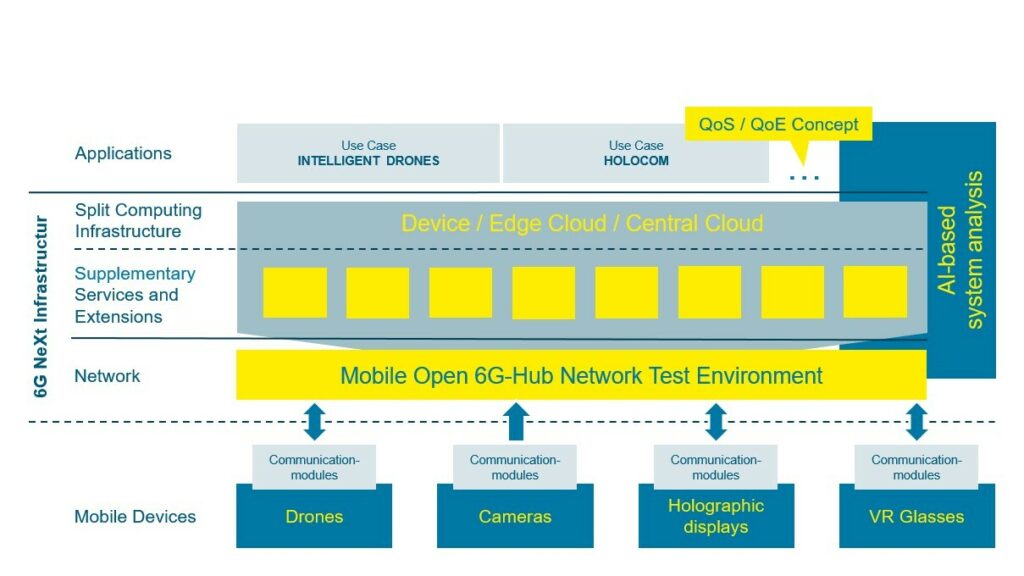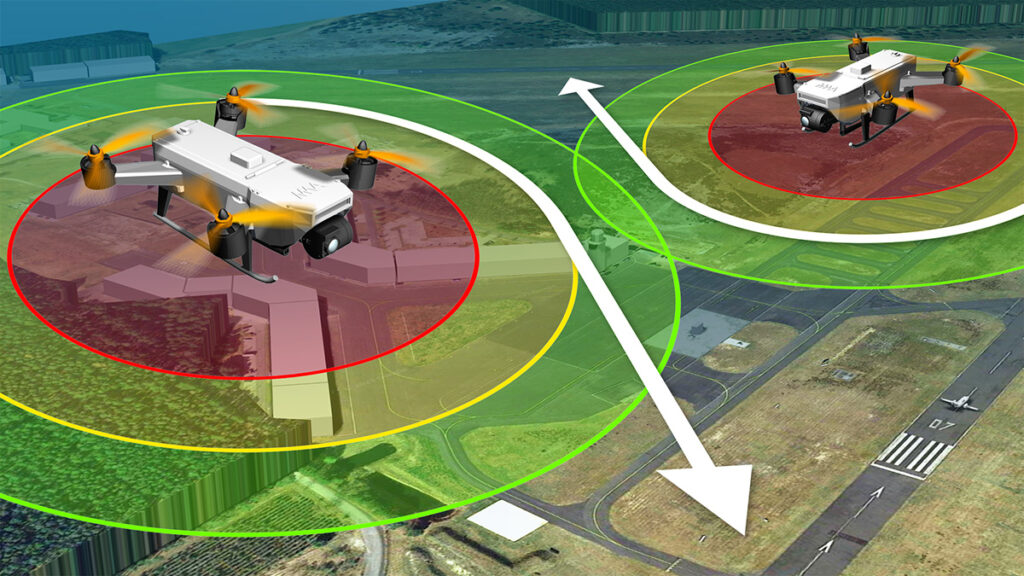6G NeXt aims to develop a scalable, modular and flexible infrastructure to enable a variety of industrial and end-user use cases with requirements exceeding the capabilities of today’s 5G network in terms of intelligence, performance and efficiency.
Main focus of the project is to build a high-performance layer that interacts with the underlying network layer via programmable interfaces. This enables computing tasks to be processed locally, in the edge cloud or in different areas of the central cloud. Computing capacity is allocated according to requirements for latency, energy consumption, cost, among other resources. Additional services and extensions optimize cloud infrastructures commonly used today.

In the pioneering 6G NeXt project, two particularly demanding applications with different requirements are being developed as examples:
Intelligent drones
A novel anti-collision system for aviation using the example of drones at airports with mixed air traffic. The flight paths of aircraft are monitored in real time and collision risks are predicted using algorithms. In the event of danger, evasive maneuvers are calculated centrally, and, unlike current solutions, the aircraft is also controlled via 6G. This application requires low latency, synchronization of data streams and the possibility to distribute data calculations (split computing).

HOLOCOM (Holographic Communication)
An interactive end-to-end transmission of real-time 3D immersive video with photorealistic content and realistic 3D depth for video conferencing. In the future, immersive generation, and transmission methods with relief for the end devices due to extended computing in the cloud, data rates of up to 500 Gbit/s may be required. New methods adapted to the 6G network for compression, distribution of video processing, optimal transmission and quality assessment of raw holographic data are required, which place extreme demands on computing power and storage capacities of the infrastructure (organic cloud). This application therefore requires high bit rates upstream and downstream as well as distributed and intelligent video processing.

